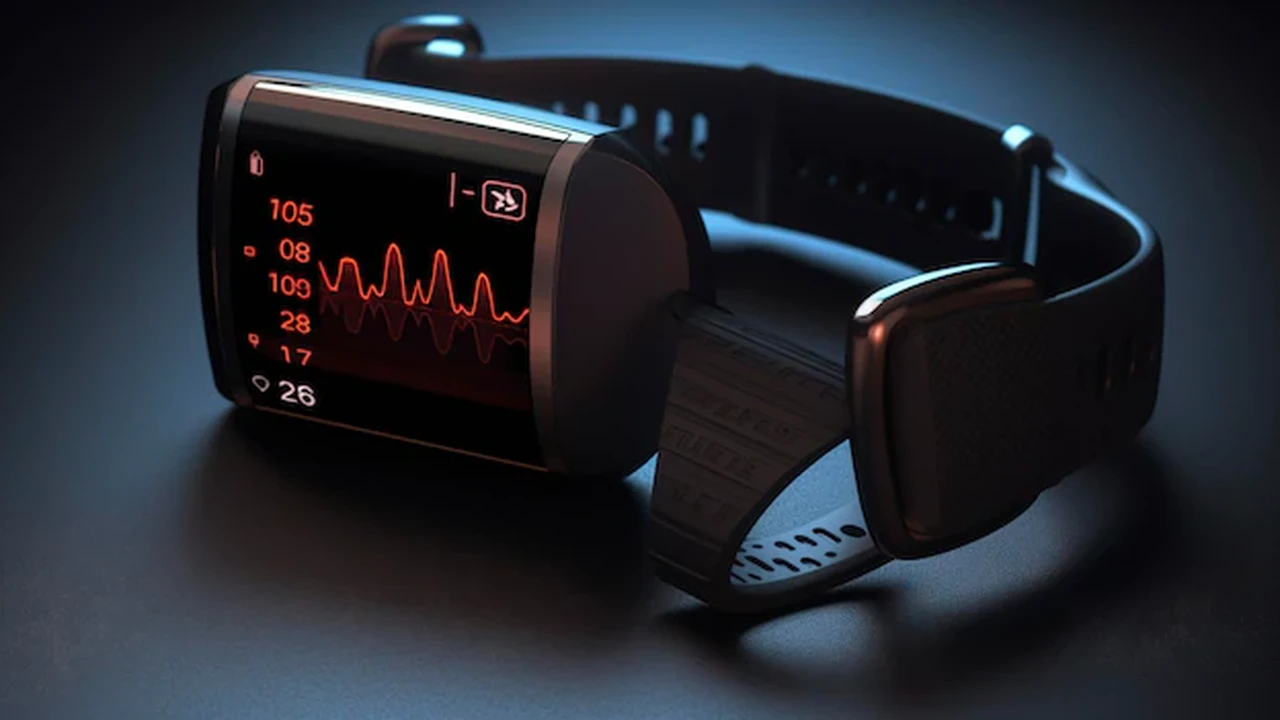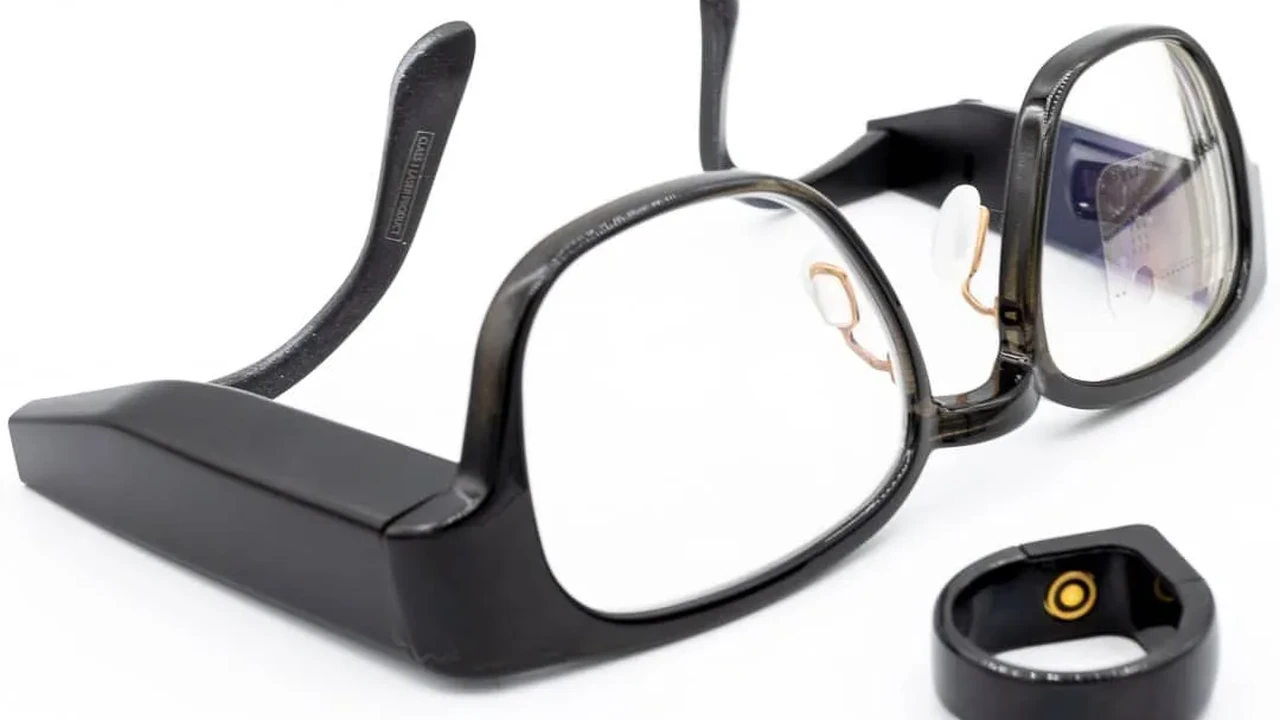Smart Glasses for Fitness Tracking and Health Monitoring
Monitor your health and fitness with smart glasses, tracking vital signs and workout performance.

Smart Glasses for Fitness Tracking and Health Monitoring
The Rise of Wearable Tech in Health and Fitness
Hey there, fitness enthusiasts and health-conscious folks! We've all seen the explosion of wearable technology, right? From smartwatches that nudge us to stand up to fitness trackers that count every step, these gadgets have become an integral part of our wellness journeys. But what if I told you there's an even more integrated and less intrusive way to keep tabs on your health and fitness? Enter smart glasses. These aren't just for looking cool or taking hands-free photos anymore. They're rapidly evolving into powerful tools for fitness tracking and health monitoring, offering a seamless blend of technology and everyday life.
Think about it: your smart glasses are already on your face, providing a direct line of sight to your world. Why not leverage that prime real estate for real-time health insights? This isn't some far-off sci-fi dream; it's happening now. Smart glasses are starting to incorporate advanced sensors and sophisticated algorithms to track everything from your heart rate during a run to your posture while you work. They can even provide visual cues and data overlays directly in your field of view, making it easier than ever to stay on top of your goals without constantly glancing at a wrist-worn device or pulling out your phone.
The beauty of smart glasses for fitness and health lies in their unobtrusive nature. Unlike a smartwatch that can feel bulky during certain activities, or a chest strap that might be uncomfortable, smart glasses are designed to be worn naturally. This means you're more likely to use them consistently, leading to more accurate and comprehensive data over time. Plus, the visual feedback they can offer is a game-changer, whether it's displaying your pace during a sprint or reminding you to hydrate during a long hike. Let's dive deeper into how these innovative devices are changing the game for fitness tracking and health monitoring.
Key Features and Capabilities of Health-Focused Smart Glasses
So, what exactly can smart glasses do when it comes to your health and fitness? A lot more than you might think! The capabilities are expanding rapidly, but here are some of the core features you'll find in health-focused smart glasses:
Real-time Biometric Data Tracking
This is where smart glasses truly shine. Many models are now equipped with optical heart rate sensors, similar to those found in smartwatches, that can continuously monitor your heart rate. This is crucial for optimizing your workouts, ensuring you're in the right training zones, and also for general health monitoring throughout the day. Some advanced models are even exploring blood oxygen saturation (SpO2) tracking, which can be an indicator of respiratory health and overall well-being.
Activity and Performance Metrics
Just like your traditional fitness tracker, smart glasses can track a wide range of activity metrics. This includes step counting, distance covered, calories burned, and even elevation changes. For more specific activities, they can offer specialized tracking. For runners, this might mean real-time pace, cadence, and stride length. For cyclists, it could be speed, distance, and power output (when paired with external sensors). The data is often displayed directly in your field of view, allowing you to stay focused on your activity without breaking stride.
Workout Guidance and Coaching
Imagine having a virtual coach right in front of your eyes. Some smart glasses can provide real-time workout guidance, displaying instructions for exercises, showing your form, or even guiding you through a yoga sequence. This can be incredibly helpful for maintaining proper technique and maximizing the effectiveness of your training. Some apps can even offer personalized coaching based on your performance data, adapting to your progress and helping you push your limits safely.
Posture and Ergonomics Monitoring
For those of us spending hours at a desk, posture is a big deal. Certain smart glasses are being developed with sensors that can detect poor posture and provide subtle visual or auditory cues to remind you to adjust. This can be a game-changer for preventing back pain and improving overall ergonomic health, especially for remote workers or gamers.
Sleep Tracking and Analysis
While you might not wear your smart glasses to bed, some systems are designed to integrate with other sleep tracking devices or offer insights based on your daytime activity and heart rate patterns. The goal is to provide a more holistic view of your health, recognizing the crucial role sleep plays in recovery and overall well-being.
Hydration and Nutrition Reminders
Staying hydrated and eating well are fundamental to health. Some smart glasses apps can be configured to send you timely reminders to drink water or to log your meals, helping you maintain healthy habits throughout your day. This proactive approach can make a significant difference in achieving your wellness goals.
Top Smart Glasses for Fitness and Health: Product Spotlight
Alright, let's get to the exciting part: which smart glasses are leading the pack in the fitness and health space? While the market is still evolving, several brands are making significant strides. Here are a few notable contenders, along with their features, typical use cases, and approximate price ranges:
1. Amazfit Falcon
Features: The Amazfit Falcon is designed with serious athletes in mind. It boasts a durable titanium unibody, GPS tracking, and a comprehensive suite of fitness features. It offers accurate heart rate monitoring, SpO2 tracking, stress monitoring, and sleep analysis. It also supports over 150 sports modes and has a long battery life. The display is bright and clear, making it easy to view data during intense workouts. It can connect to external fitness devices via Bluetooth, like heart rate belts or power meters.
Use Cases: Ideal for runners, cyclists, hikers, and multi-sport athletes who need robust data tracking and durability. Its strong GPS capabilities make it excellent for outdoor activities. It's also suitable for general health monitoring due to its comprehensive sensor array.
Comparison: Compared to more lifestyle-oriented smart glasses, the Falcon is built for performance. It prioritizes data accuracy and ruggedness over subtle design. It's more akin to a high-end sports watch integrated into a glasses form factor.
Price: Approximately $499 - $599 USD.
2. Ray-Ban Stories (with fitness app integrations)
Features: While primarily known for their camera and audio capabilities, Ray-Ban Stories (developed with Meta) can integrate with various fitness apps to provide a more connected experience. They feature open-ear audio, allowing you to listen to music or podcasts while staying aware of your surroundings, which is great for outdoor activities. While they don't have built-in advanced biometric sensors like heart rate, their integration with phone-based fitness apps means you can still track your runs, walks, and other activities hands-free. The focus here is on convenience and seamless integration with your digital life, including your fitness apps.
Use Cases: Casual exercisers, walkers, and those who enjoy listening to audio while being active. Great for capturing short video clips of your workouts or scenic routes. They are more about lifestyle integration than hardcore performance tracking.
Comparison: Less focused on raw biometric data than the Falcon, but excels in convenience and social sharing. It's a good choice for those who want a stylish pair of glasses that also offer some smart fitness features through app connectivity.
Price: Approximately $299 - $329 USD.
3. Vue Smart Glasses
Features: Vue Smart Glasses are designed to be everyday glasses that also incorporate smart features. They offer activity tracking (steps, distance, calories), sleep tracking (when worn), and open-ear audio. They can also provide notifications and hands-free calls. While not as robust as dedicated sports glasses, they offer a subtle way to integrate basic fitness tracking into your daily routine. They come in various styles and can be fitted with prescription lenses, making them highly versatile for everyday wear.
Use Cases: Individuals looking for discreet, everyday smart glasses with basic fitness tracking capabilities. Perfect for walking, light exercise, and general health awareness throughout the day. Also great for those who need prescription lenses and want smart features without a separate device.
Comparison: More focused on general wellness and convenience than intense athletic performance. They blend seamlessly into daily life, offering a subtle way to stay active and connected.
Price: Approximately $179 - $249 USD (depending on prescription and style options).
4. Solos Smart Glasses
Features: Solos Smart Glasses are specifically engineered for cyclists and runners. They feature an optical head-up display (HUD) that projects real-time performance data directly into your field of view, including speed, cadence, heart rate (when paired with a sensor), power, and distance. They also offer audio cues and can connect to popular cycling computers and fitness apps. The design is lightweight and aerodynamic, making them comfortable for long rides or runs.
Use Cases: Serious cyclists and runners who want real-time performance metrics without looking down at a bike computer or watch. Ideal for training, racing, and improving athletic performance.
Comparison: Highly specialized for endurance sports, offering a superior heads-up display experience compared to general-purpose smart glasses. They are less about general health monitoring and more about optimizing athletic performance.
Price: Approximately $399 - $499 USD.
5. Jins Meme Smart Glasses
Features: Jins Meme glasses stand out with their focus on eye health and fatigue monitoring. They use electrooculography (EOG) sensors to detect subtle eye movements and blinks, which can indicate fatigue, concentration levels, and even posture. While not a traditional fitness tracker, this data can be invaluable for understanding your body's state during long work sessions or intense mental tasks. They also offer basic activity tracking like steps and calories. The accompanying app provides insights and recommendations based on your eye and body data.
Use Cases: Office workers, students, and anyone who spends a lot of time in front of screens. Useful for preventing eye strain, improving focus, and maintaining good posture during sedentary activities. Can also provide insights into overall energy levels.
Comparison: Unique in its focus on eye and mental fatigue, offering a different angle on health monitoring compared to purely physical activity trackers. It complements other fitness devices by providing cognitive and ergonomic insights.
Price: Approximately $199 - $299 USD (often sold as frames with smart tech, lenses extra).
Choosing the Right Smart Glasses for Your Health Journey
With so many options emerging, how do you pick the right pair of smart glasses for your fitness and health needs? It really boils down to your primary goals and lifestyle. Here are some factors to consider:
Define Your Primary Use Case
Are you a hardcore athlete looking for performance optimization? Or are you more interested in general wellness and subtle health monitoring throughout your day? Your answer will heavily influence the type of smart glasses you should consider. If you're a runner, a pair with robust GPS and real-time pace display like the Amazfit Falcon or Solos Smart Glasses might be perfect. If you just want to track your daily steps and listen to podcasts, Ray-Ban Stories or Vue Smart Glasses could be a better fit.
Consider Sensor Capabilities
What kind of data do you want to track? Heart rate, SpO2, steps, sleep, posture? Make sure the smart glasses you choose have the necessary sensors to provide the metrics important to you. Some glasses might excel in one area (like eye tracking with Jins Meme) but be less comprehensive in others.
Comfort and Fit are King
You'll be wearing these on your face, so comfort is paramount. Try them on if possible. Check the weight, the nose pads, and how they sit on your ears. If they're uncomfortable, you won't wear them consistently, and then what's the point? Also, consider if they can accommodate your prescription lenses if you wear glasses daily.
Battery Life Matters
There's nothing worse than a dead device mid-workout. Check the advertised battery life and consider how it aligns with your typical usage. Some smart glasses might last for days on a single charge, while others might need daily top-ups, especially with heavy feature usage.
App Ecosystem and Data Integration
How well do the smart glasses integrate with your existing fitness apps (e.g., Strava, Apple Health, Google Fit)? A seamless data flow makes it much easier to track your progress and get a holistic view of your health. Check if the companion app for the smart glasses provides clear, actionable insights from your data.
Durability and Water Resistance
If you plan to use your smart glasses during intense workouts or in outdoor environments, look for models with good durability and water resistance ratings (e.g., IPX4 for sweat and splashes, or higher for rain). You don't want your investment to be ruined by a little sweat or an unexpected downpour.
Price vs. Features
Smart glasses can range significantly in price. Set a budget and then look for the best features within that range. Sometimes, paying a bit more for a feature you truly need (like a heads-up display for cycling) is worth it in the long run.
The Future is Clear: Smart Glasses and Your Well-being
The integration of smart glasses into our health and fitness routines is still in its early stages, but the potential is enormous. As sensor technology becomes more miniaturized and accurate, and as AI algorithms become more sophisticated, we can expect smart glasses to become even more powerful health companions. Imagine smart glasses that can detect early signs of illness, provide personalized nutrition advice based on your real-time metabolism, or even guide you through mindfulness exercises when your stress levels rise.
The shift towards more natural and integrated wearable technology is undeniable. Smart glasses offer a unique form factor that can provide continuous, unobtrusive monitoring and real-time feedback, all while keeping your hands free and your focus on the world around you. They represent a significant step forward in making health and fitness tracking more accessible, more intuitive, and ultimately, more effective for everyone. So, whether you're an elite athlete or just looking to live a healthier life, keep an eye on smart glasses – they might just be the next essential tool in your wellness arsenal.
:max_bytes(150000):strip_icc()/277019-baked-pork-chops-with-cream-of-mushroom-soup-DDMFS-beauty-4x3-BG-7505-5762b731cf30447d9cbbbbbf387beafa.jpg)





